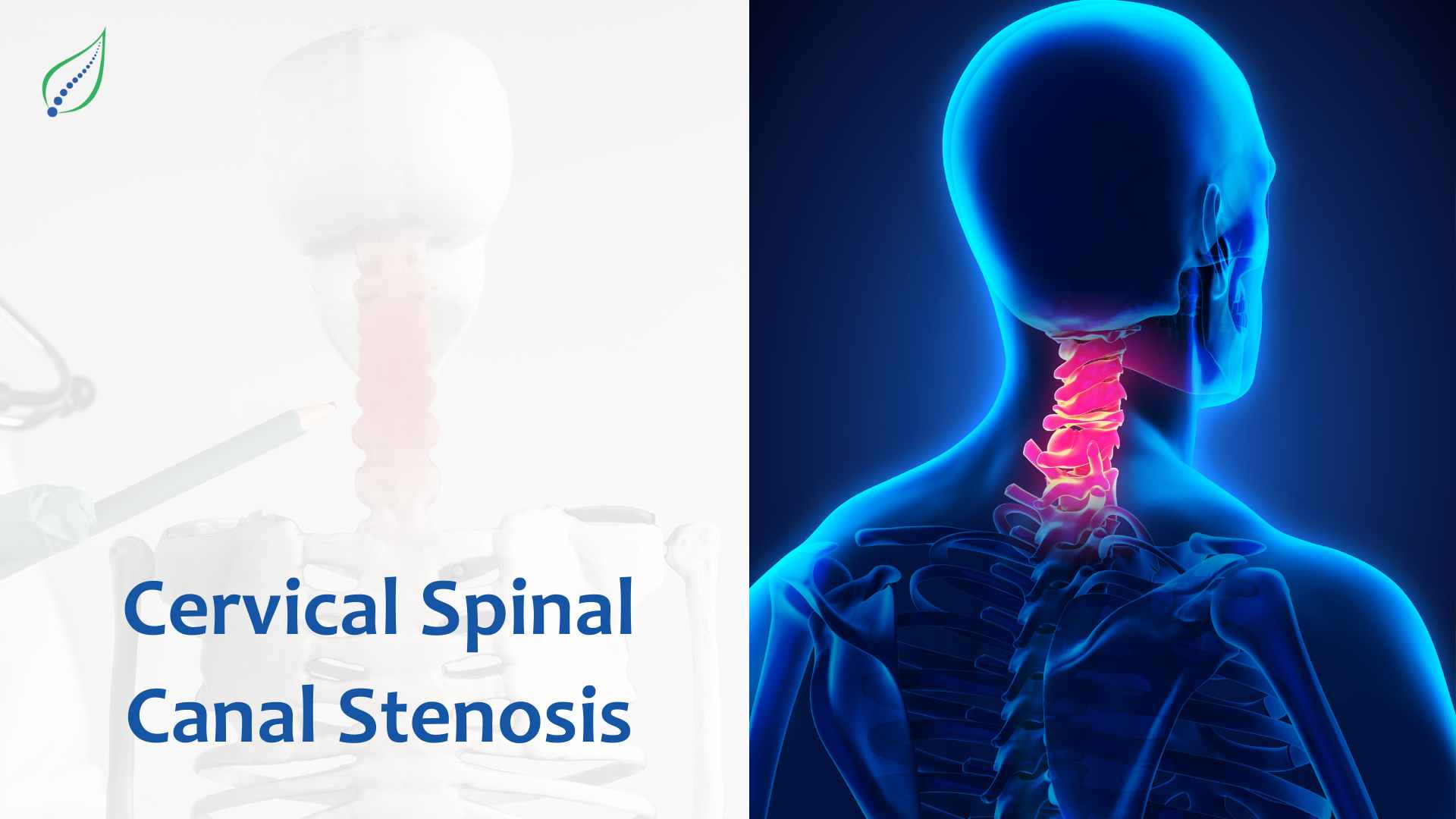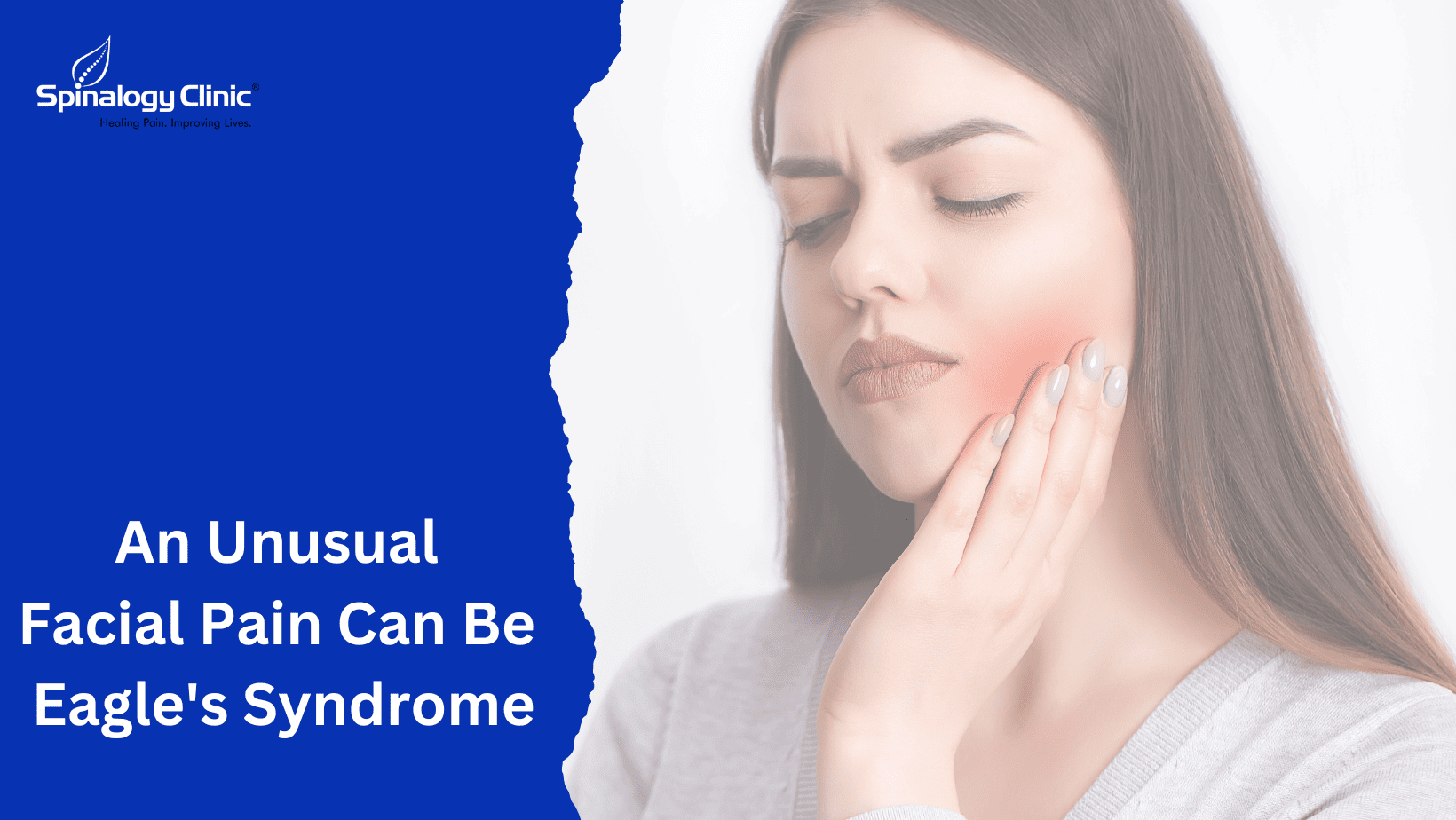Cervical Spinal Canal Stenosis: Causes, Symptoms, and Nonsurgical Treatment Options
Cervical canal stenosis is the narrowing of the spinal canal which results in the compression of the spinal cord and/or the nerve roots. In this blog post, we’ll take a look at what causes cervical canal stenosis, its common symptoms and some non-surgical ways to manage it.
What Causes Cervical Stenosis?
There are a few possible causes of a narrowed spinal canal
- Degenerative disc disease - As we age, the discs between the vertebrae starts to break down, which causes wear and tear of the joints in between the vertebrae.. This can cause bulging or herniation of the discs into the spinal canal. Ligamentum flavum ligament in spinal canal gets thickened with increasing age. This also contributes to canal stenosis.
- Bone spurs - Also known as osteophytes, bone spurs are bony projections that are formed along the vertebral column (on facet joints and at the margins of discs). These may protrude into the spinal canal.
- Arthritis - Cervical facet arthritis may cause bone and cartilage breakdown, leading to bone spur formation and other changes that narrows the canal.
- Injury - Prior neck injuries, such as whiplash, can sometimes lead to disc herniation or scar tissue that impinges on the canal.
- Congenital stenosis - Some people are simply born with a smaller cervical canal that puts them at higher risk for symptomatic stenosis later in life.
Symptoms of Cervical Spinal Stenosis
There are a variety of symptoms that can arise from cervical spinal stenosis. Some of the most common include:
- Neck pain - One of the hallmark symptoms is neck pain, ranging from mild to severe depending on the degree of nerve impingement. It is typically described as an aching or stiffness in the neck that is aggravated by movements like extending or rotating the neck. Pain may radiate from the neck into the shoulders or down the arms.
- Arm pain - Nerve root compression frequently leads to pain that radiates from the neck into one or both arms, known as radiculopathy. Patients describe this as shooting, stabbing, or burning arm pain. It often follows the typical distribution of a compressed nerve root, like C7 radiculopathy causing pain down the triceps.
- Numbness/tingling - Numbness or tingling sensations are common in the shoulders, arms, or hands due to nerve root irritation. These odd sensations are known medically as paraesthesia. Numbness, clumsy hands are a frequent complaint with advanced cervical stenosis.
- Loss of coordination - Compression of the spinal cord can lead to substantial problems with dexterity, coordination, and fine motor control. Patients may notice clumsiness, difficulty grasping objects, dropping things, shakiness, or an unsteady gait.
- Headaches - Impingement of nerves at the top of the neck can trigger cervicogenic headaches. These often start in the neck or back of head and radiate forward.
- Muscle weakness - Arm and hand weakness often occurs from cervical nerve root compression. The weakness usually affects one side and certain muscle groups like the deltoids or triceps. Leg weakness is least common.
- Balance problems – In the case of spinal cord compression, patients may develop difficulty in walking or balancing themselves. There is increased risk of falls due to the imbalance combined with leg weakness or numbness.
The specific symptoms experienced depend on the location and severity of the spinal narrowing. Working with a spine specialist is important to properly evaluate and treat symptoms from cervical stenosis.
Nonsurgical Treatments for Cervical Stenosis
For patients unwilling or unable to undergo surgery, there are some other options to help manage cervical stenosis. These include:
- Medications - Non-steroidal anti-inflammatory drugs (NSAIDs) like ibuprofen may help reduce arthritis pain and swelling that contributes to stenosis. Muscle relaxants can also help ease painful muscle spasms.
- Neck braces or collars - These can restrict motion and reduce irritation of the spinal nerves. They are often worn for short periods.
- Manual Traction - Gentle, intermittent traction creates more space in the cervical canal and takes pressure off compressed nerve roots. This can be done at home or in a clinic by expert manual therapist.
- Physical therapy - PT focuses on improving neck mobility, posture, and strength. It can help in reducing pain and helps to stabilize the neck during activity.
- Spinal injections - Corticosteroid injections around irritated nerves may reduce local inflammation and provide temporary symptom relief.
- Lifestyle modifications - Losing excess weight, quitting smoking, and managing chronic conditions like diabetes can help slow the progression of cervical arthritis and stenosis.
If started in time and under a speciality team, non-surgical treatments give long-term relief from cervical canal stenosis. While nonsurgical options may help manage the symptoms of cervical stenosis, they are unlikely to resolve severe narrowing on their own. Patients with intractable pain or loss of function often require surgical intervention like a cervical decompression. However, trying conservative treatments first is reasonable in mild to moderate cases without rapidly progressive neurological declines. Working closely with an experienced spine specialist is key to determining the best treatment approach.

_1746449195_1751827240.png)


